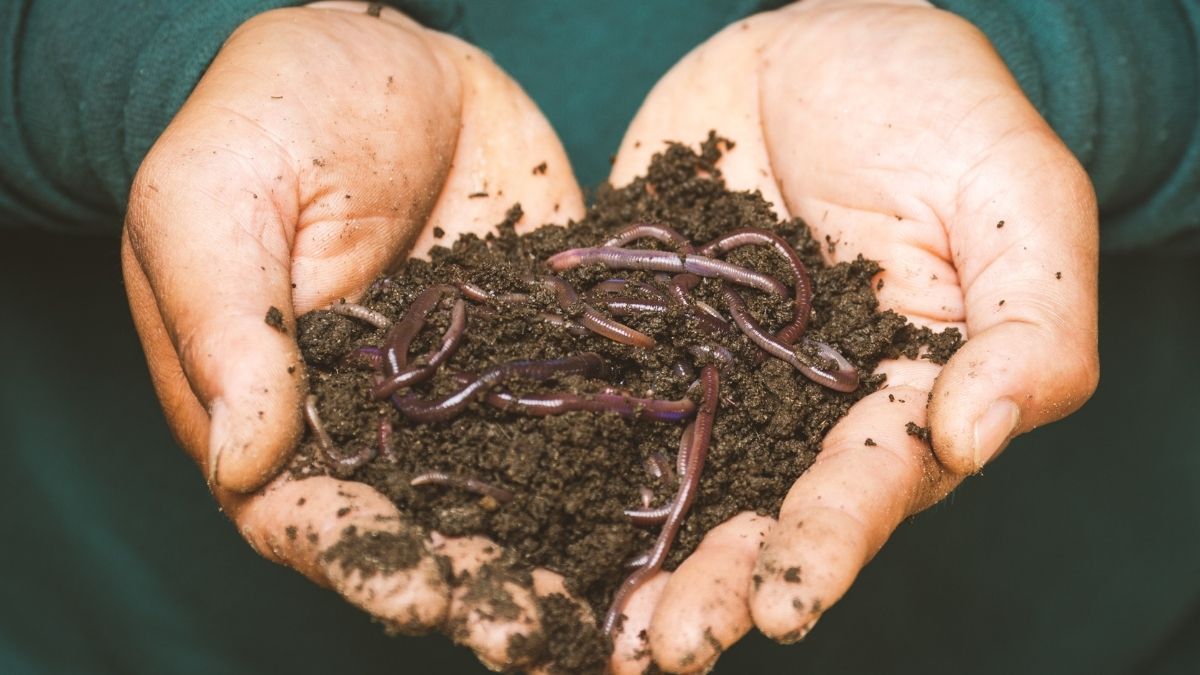High in nutrients, cheaper than traditional waste management methods, and much better for the environment, vermiculture definitely has many benefits over traditional fertilizers. In this guidance from the department of environment, forestry and fisheries, vermiculture is included as a climate-smart agriculture practice.

The guide describes worm farming, or vermicomposting, as a method “where compost is prepared using specially introduced earthworms as decomposing agents” and explains that it is a good way to recycle food waste and create nutrient-rich compost.
Davidzo Chizhengeni, an animal scientist and farmer from Harare, Zimbabwe, says that by practicing vermiculture, farmers put good nutrients back into the growing process. Chizhengeni has been in agriculture since he was in high school in 2010, graduating with a bachelor’s degree in animal science in 2019.
He explains that organic waste often ends up in a landfill when, through the use of vermiculture, farmers can limit or even eradicate the use of other fertilizers or manures.
“I am not looking for external fertilizer or external organic fertilizer because I am using my compost. I am able to recycle [my] waste. Some people say that waste is gold, [and it is true in] that waste is good nutrients. I make sure to recycle those nutrients.”
PODCAST: Organic Fertilizer Won’t Break the Bank
What you need to practice vermiculture on a small scale
Chizhengeni divides vermiculture into three elements. “Number one, you have basic composting knowledge. Number two, you have to have a space in which you are going to do your vermicompost. And number three, you need to have the waste that you are going to degrade or the waste that is going to be degraded by the worms.”
As vermiculture is a method of composting, it is often compared to traditional composting. The obvious difference between the methods is that vermiculture includes the use of worms, while traditional composting does not. Vermiculture also requires a tank, but does not require aeration, unlike traditional composting.
Depending on the size of your farming operation, using vermiculture to create nutrients for your plants doesn’t need to take up a lot of space. This illustration from Rhodes University details how they set up their worm farm using a standard black container suspended on bricks.
Home worm farm container components include the following:
- Worm bedding: Worm bedding can be made from damp leaves, dead plants, farmyard manure, shredded newspaper, sawdust, and dull cardboard, among other organic items.
- Filter: The filter is made up of support rings and is covered with shade cloth. It settles at the bottom of the bin.
- A faucet: The faucet is placed at the bottom of the container so it can be used to drain the liquid compost.
- Worms: Don’t forget to add your worms. You can add them to the top layer of bedding.
- Organic waste: Of course, the farm cannot function without organic waste. Add your organic waste periodically, and don’t forget to harvest the worm tea!
Be sure to add holes to the lid of the container for air to enter, and make sure the container is placed in an area where it is protected from the elements.
Chizhengeni recommends that aspiring worm farmers use red worms for their worm farming operations. “These worms have voracious appetites. They are capable of consuming three quarters of their body length in one day. So if someone wants to get into vermiculture, the best worms to use are red worms.”
ALSO READ: How a Free State farmer reclaimed his dying land from the brink
A disadvantage
The bin method is ideal for gardeners or farmers with small operations. However, if you have a larger operation, you probably need more space for a larger worm farm. Chizhengeni says the amount of manure harvested through worm farming is one of the biggest challenges he faces.
“One of the biggest challenges with vermicomposting has to do with how much you can harvest at any given time. This is directly related to the size of the container, the number of worms, and also the amount of debris it may contain. So if you’re doing it in a small area or backyard, it means that after six months, your harvest is directly related to the size of the container. If your trash can is one meter [tall]you may only have 50 kg. [And] this is more than six months of composting.”
For Chizhengeni, practicing vermiculture is how he keeps his operation from losing important nutrients. “The greatest reward [when] practicing vermicompost is that you are able to control the cycle of nutrients and make sure that you are always recycling them and reducing the amount of waste or the amount of nutrients that leave your house”.
Sign up for Farmer’s Inside Track: Join our exclusive platform for new entrants to agriculture and agribusiness, with newsletters and podcasts.

